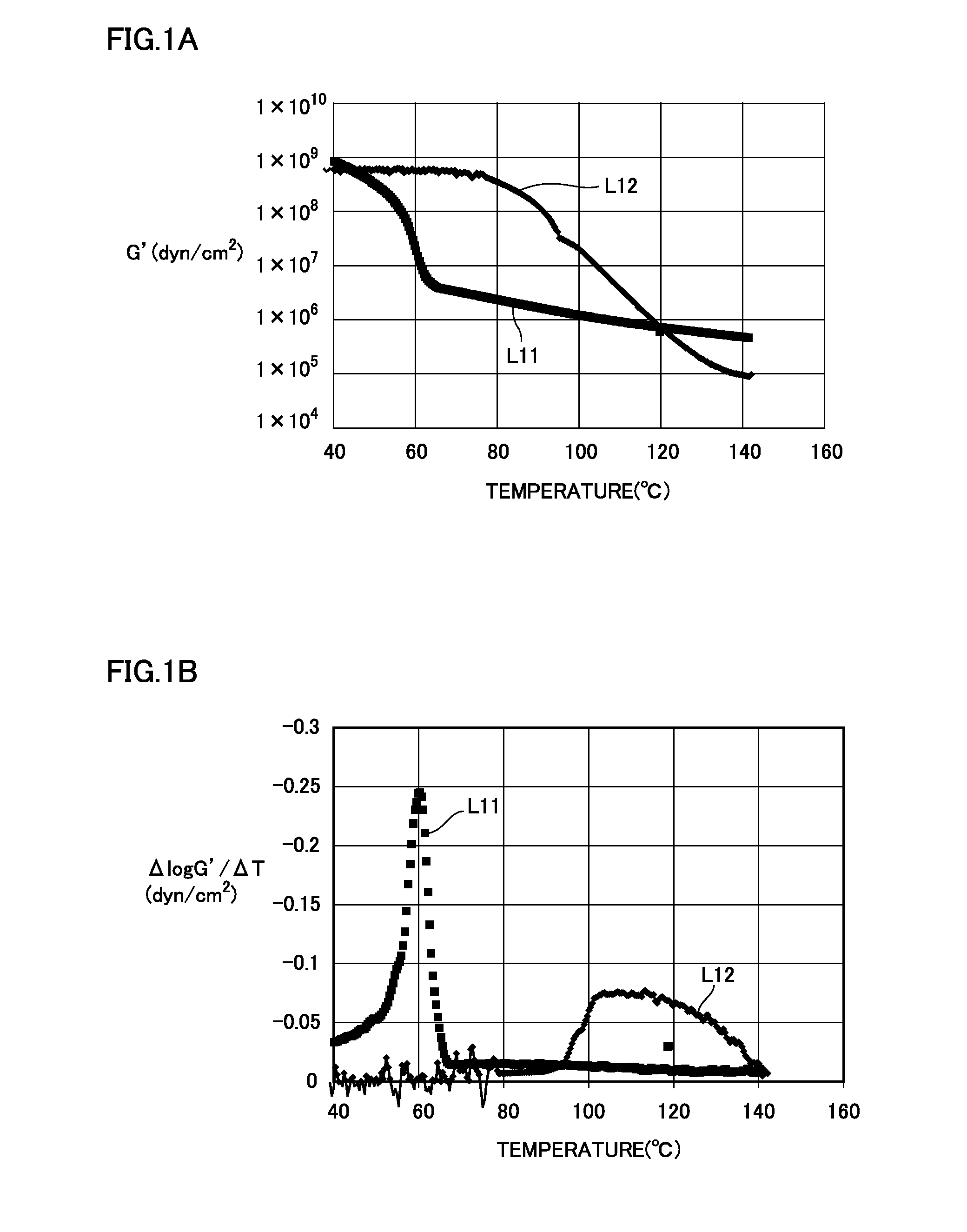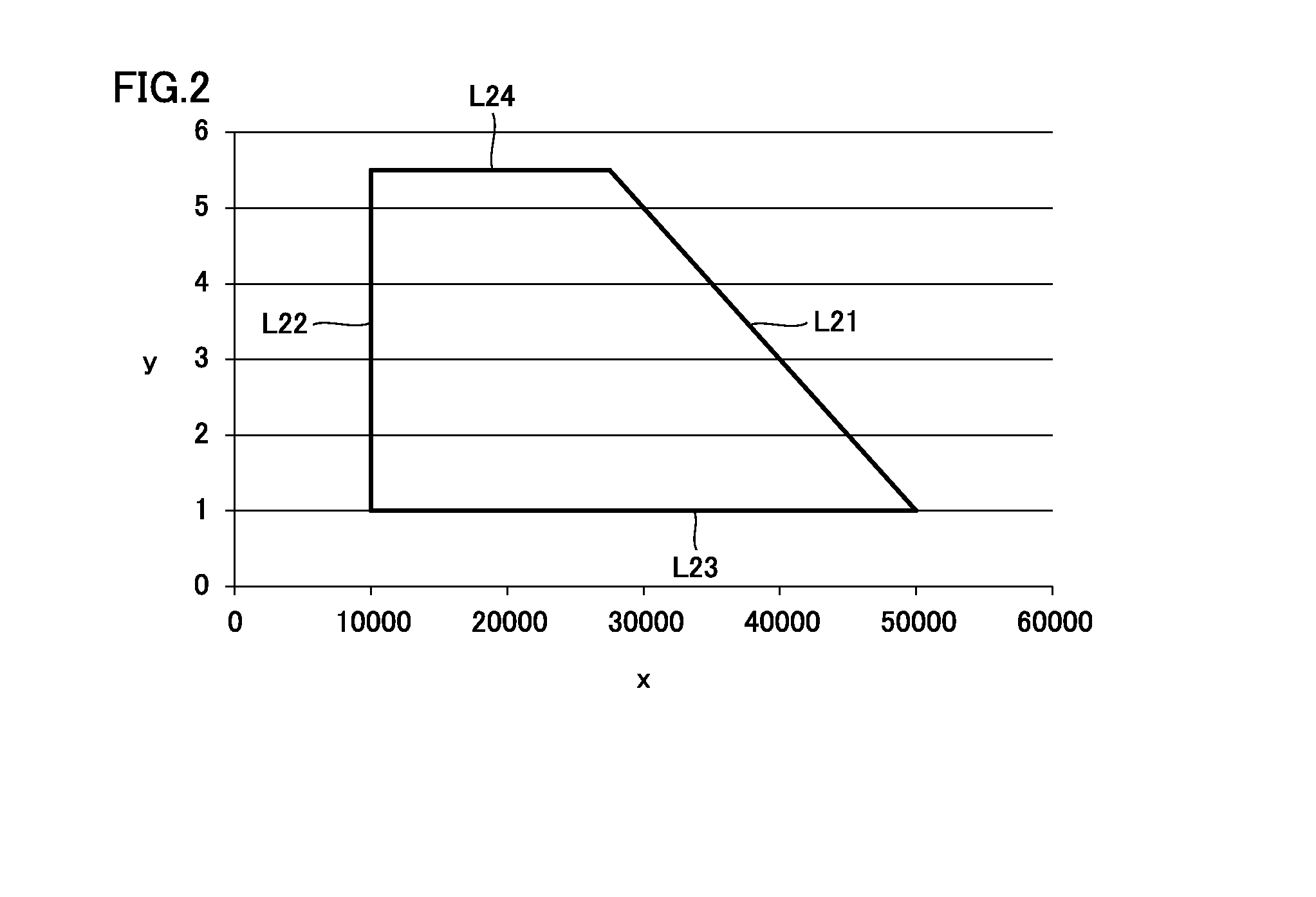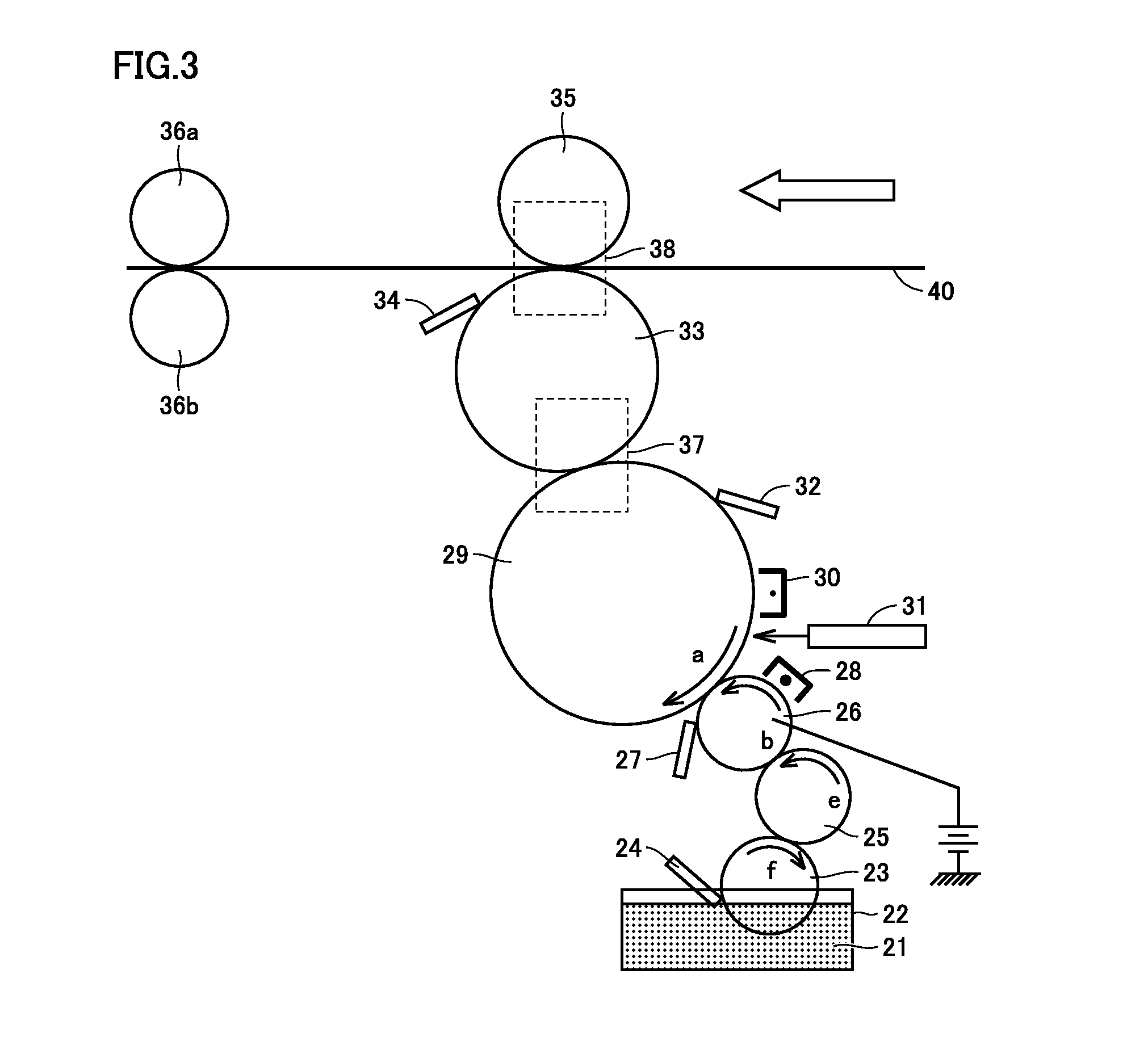Liquid developer
a liquid developer and developer technology, applied in the field of liquid developers, to achieve the effect of moderate gloss and fixation strength, excellent low-temperature fixability
- Summary
- Abstract
- Description
- Claims
- Application Information
AI Technical Summary
Benefits of technology
Problems solved by technology
Method used
Image
Examples
manufacturing example 1
Manufacturing of Dispersion Liquid (W1) of Shell Particles
[0174]In a beaker made of glass, 100 parts by mass of 2-decyltetradecyl(meth)acrylate, 30 parts by mass of methacrylic acid, 70 parts by mass of an equimolar reactant with hydroxyethyl methacrylate and phenyl isocyanate, and 0.5 part by mass of azobis methoxy dimethyl valeronitrile were introduced, and stirred and mixed at 20° C. Thus, a monomer solution was obtained.
[0175]Then, a reaction vessel provided with a stirrer, a heating and cooling apparatus, a thermometer, a dropping funnel, a desolventizer, and a nitrogen introduction pipe was prepared. In that reaction vessel, 195 parts by mass of THF were introduced, and the monomer solution above was introduced in the dropping funnel provided in the reaction vessel. After a vapor phase portion of the reaction vessel was replaced with nitrogen, the monomer solution was dropped in THF in the reaction vessel for 1 hour at 70° C. in a sealed condition. Three hours after the end of...
manufacturing example 2
Manufacturing of Solution (Y1) for Forming Core Resin
[0178]In a reaction vessel provided with a stirrer, a heating and cooling apparatus, and a thermometer, 970 parts by mass of polyester resin (Mn: 5400) obtained from sebacic acid, adipic acid, and ethylene glycol (a molar ratio of 0.8:0.2:1) and 300 parts by mass of acetone were introduced and stirred for uniform solution in acetone. In the obtained solution, 30 parts by mass of IPDI were introduced and caused to react for 6 hours at 80° C. When an NCO value attained to 0, 28 parts by mass of terephthalic acid were further added and caused to react for 1 hour at 180° C. Thus, a core resin which was a urethane-modified polyester resin was obtained. Mn of the obtained core resin was 23000 and a concentration of a urethane group therein was 1.6%.
[0179]One thousand parts by mass of the obtained core resin and 1000 parts by mass of acetone were stirred in a beaker, to thereby uniformly dissolve the core resin in acetone. Thus, a soluti...
manufacturing example 3
Manufacturing of Solution (Y2) for Forming Core Resin
[0180]In a reaction vessel provided with a stirrer, a heating and cooling apparatus, and a thermometer, 890 parts by mass of polyester resin (Mn: 1400) obtained from sebacic acid, adipic acid, and ethylene glycol (a molar ratio of 0.8:0.2:1) and 300 parts by mass of acetone were introduced and stirred for uniform solution in acetone. In the obtained solution, 105 parts by mass of IPDI were introduced and caused to react for 6 hours at 80° C. When an NCO value attained to 0, 28 parts by mass of terephthalic acid were further added and caused to react for 1 hour at 180° C. Thus, a core resin which was a urethane-modified polyester resin was obtained. Mn of the obtained core resin was 15000 and a concentration of a urethane group therein was 5.5%.
[0181]One thousand parts by mass of the obtained core resin and 1000 parts by mass of acetone were stirred in a beaker, to thereby uniformly dissolve the core resin in acetone. Thus, a solut...
PUM
 Login to View More
Login to View More Abstract
Description
Claims
Application Information
 Login to View More
Login to View More - R&D
- Intellectual Property
- Life Sciences
- Materials
- Tech Scout
- Unparalleled Data Quality
- Higher Quality Content
- 60% Fewer Hallucinations
Browse by: Latest US Patents, China's latest patents, Technical Efficacy Thesaurus, Application Domain, Technology Topic, Popular Technical Reports.
© 2025 PatSnap. All rights reserved.Legal|Privacy policy|Modern Slavery Act Transparency Statement|Sitemap|About US| Contact US: help@patsnap.com



